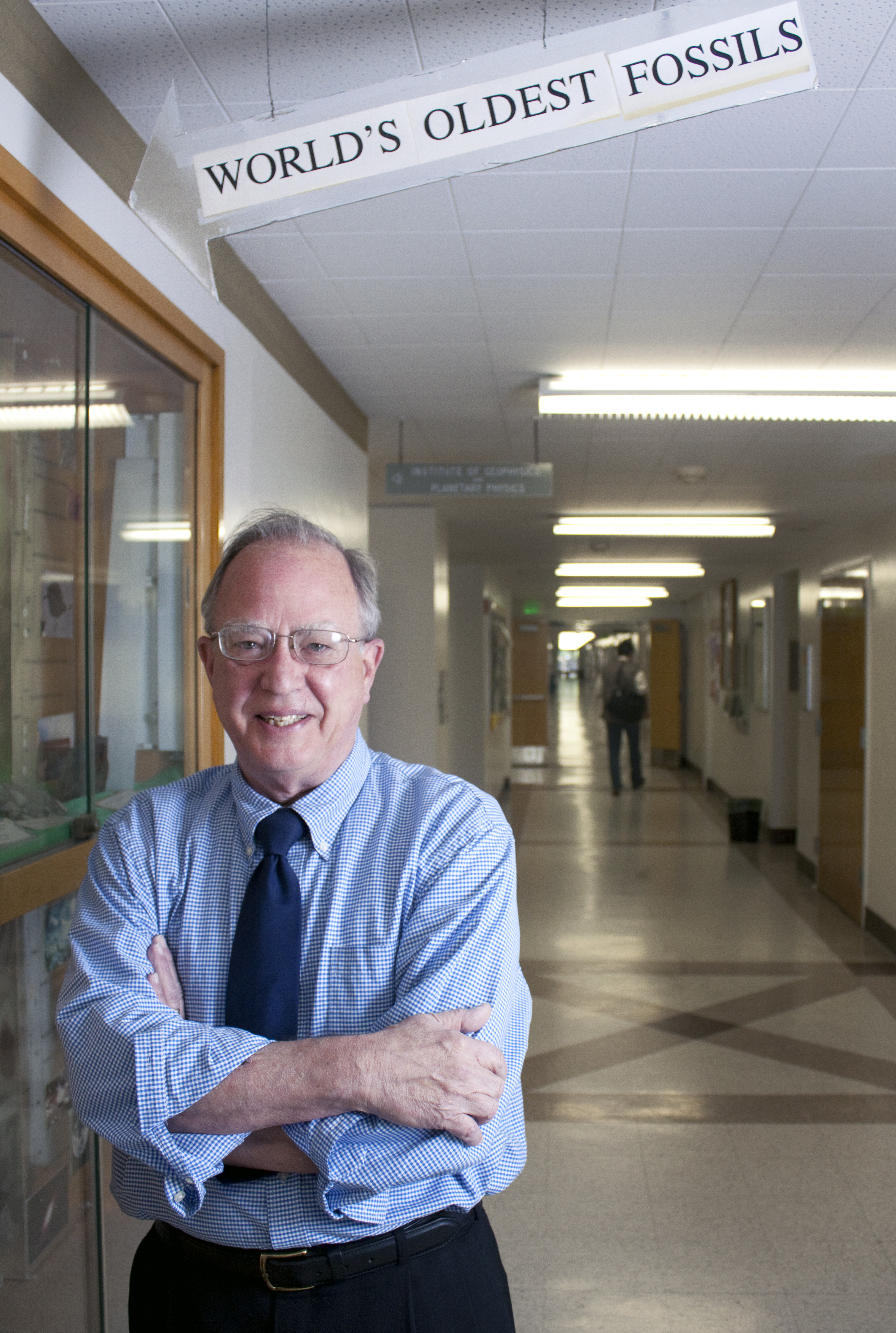A faded blue arrow in the Geology Building points to a glass display case bearing a sign: “World’s Oldest Fossils.”
The information behind the glass explains it all ““ the rock specimens are from Australia and date back 3.5 billion years. A long, gold timeline also indicates the length of time between the beginnings of the planet, the time period from which the rocks come from and the development of humans.
What the signs do not say is that this knowledge was the result of a 1984 research group of 19 young scientists from across the globe, led by a UCLA professor who hoped to complete the puzzle of the geologic record.
The year was 1977, and J. William Schopf had just won the Alan T. Waterman Award, which honors a particular young scientist or engineer. With $150,000 in prize money, Schopf, a UCLA professor of paleobiology, hoped to fill in the missing record of early life on Earth.
This was a gap in knowledge that had troubled the likes of Charles Darwin, according to an article published in Geology Today. Schopf had become interested in the topic during his sophomore year at Oberlin College in Ohio, after his professor described the deficiency in the fossil record as the greatest unsolved problem in science.
“I went back to my dorm room and looked at my copy of the Origin of Species and saw that my professor was right,” Schopf said. “I said to myself, “˜That’s something I could solve.'”
With this in mind, Schopf brought together a team of international and interdisciplinary scientists. Prior to their research, the generally accepted scientific date for the beginning of life was about one billion years ago.
For the next 14 months, the group came to UCLA and worked to analyze rock samples in Schopf’s lab, eventually extending the known record of life seven-fold, to 3.5 billion years, Schopf said.
Through frequent discussions and weekly pizza dinners, the researchers also taught each other about their respective fields, proving the value of interdisciplinary study.
At times, the findings seemed elusive. Rock samples that date further back in time are increasingly difficult to find because of the geologic cycle of erosion and compression. Since the average lifetime of a rock specimen is 200 million years, this presents difficulties.
The team used rock samples that Schopf had previously collected during expeditions to northwestern Australia.
The research trips had involved extensive camping and “grubby” food, but Schopf said all the work was worth it.
“It’s the greatest position to add to human knowledge. There’s nothing more fun ““ it’s the greatest adventure,” he said enthusiastically, flashing a smile.
But proving the fossils’ authenticity and derivation from organic matter was another obstacle. To aid with the process, Schopf enlisted Anatoliy Kudryavtsev, a senior scientist in the UCLA Center for the Study of Evolution and the Origin of Life, whom he met at a conference.
At the time, the then-physics researcher at the University of Alabama, Birmingham was using laser-Raman imagery to measure meteorites. This non-destructive technique uses a laser to heat a rock sample and measure the scatter of radiation to see the chemical structure without cutting the rock, Kudryavtsev said.
“This area of work was a hobby,” he said. “Fossils were just a curiosity.”
Though the world’s oldest fossils are greatly removed from modern times, Schopf said the knowledge gained and techniques utilized in the research could aid in the discovery of specimens from other planets.
“The approach we have to these on Earth is a test ““ it is not limited to the Earth and can be applied anywhere,” he said. “We will begin to figure out how we fit in.”
